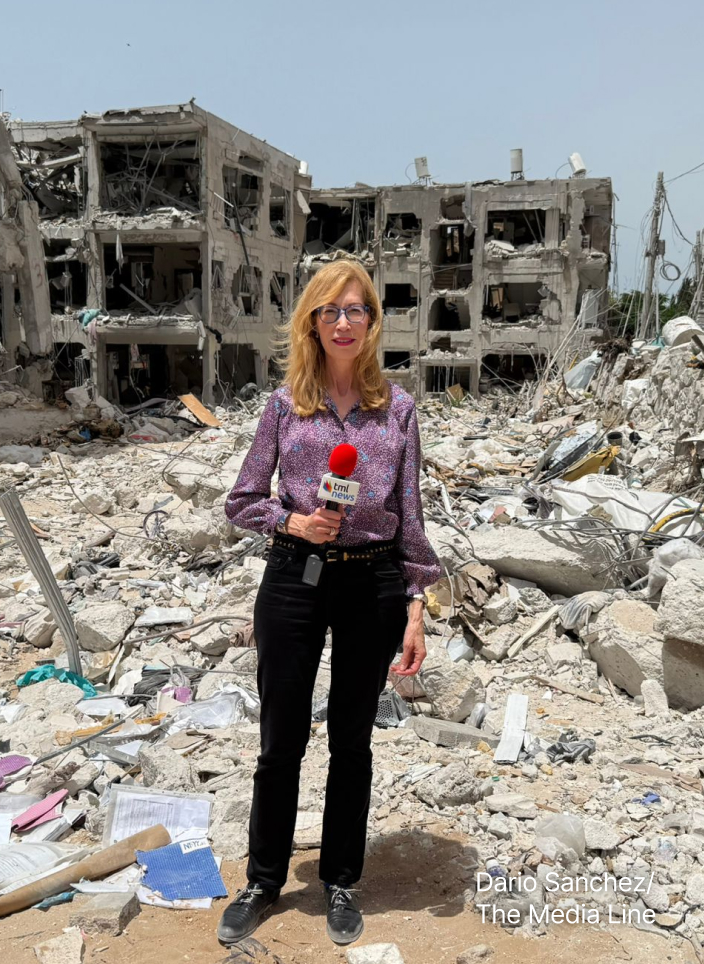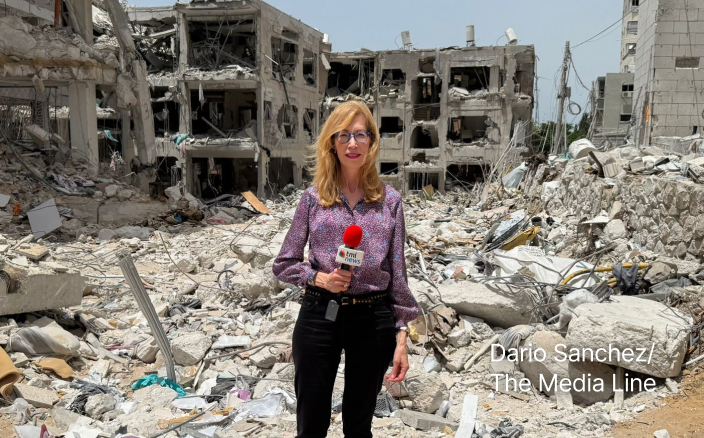On October 9, 2025, Israeli and Hamas representatives signed an agreement in Sharm el-Sheikh, mediated by Egypt, to end the war in Gaza after more than 22 months of fighting. The deal provides for an immediate ceasefire, releases of hostages and prisoners, the opening of humanitarian corridors including Rafah, and the withdrawal of Israeli forces from civilian areas. International observers from Qatar, Turkey, and the US attended. Enforcement and long-term governance remain under discussion.
Interviews with three figures—Samer Raghib, director of the Arab Foundation for Development and Strategic Studies; Gershon Baskin, a former Israeli hostage negotiator; and Sabri Saidam, deputy secretary-general of Fatah’s Central Committee—offer perspectives on how the agreement came together and what must follow.
An unprecedented diplomatic move
Raghib told The Media Line that Egypt’s sustained mediation was decisive. “In an unprecedented diplomatic move, following intensive Egyptian mediation efforts that lasted for consecutive days amid escalating violence in Gaza, an agreement was announced today in Sharm El-Sheikh to implement a ceasefire and end the war on the Strip,” Raghib said. He added: “At a time when Gaza was witnessing peak levels of escalation and a rising toll of casualties and destruction, Egyptian diplomacy moved with full force, leveraging its relationships with all parties and succeeding in achieving a breakthrough that had seemed distant. After a long night of tough negotiations, Egyptian mediators managed to present a consensus formula accepted by both the Palestinian and Israeli sides, with the agreement signed in the presence of international representatives.”
Raghib outlined the deal’s immediate priorities. “The agreement does not currently include comprehensive political details but focuses urgently on ending the violence,” he said, listing: “An immediate and comprehensive ceasefire by both parties. … The opening of the Rafah crossing and other crossings to allow the entry of urgent humanitarian and relief aid. … Withdrawal of military forces from densely populated civilian areas. … Initiation of consultations for arrangements to permanently end the aggression and ensure the situation does not deteriorate again.”
He tied the steps to Cairo’s aims. “Egyptian goals strategies was to stop the bloodshed in Gaza and save the lives of innocent civilians, especially women and children, who are suffering from severe shortages of basic supplies and health services,” Raghib stated. “This agreement considered the maximum possible success under the current circumstances, and it achieved Egypt’s strategic objectives announced at the beginning of the conflict in Gaza. First, to end the suffering of our brothers in Gaza and the war of genocide. Prevent the conflict from escalating into a regional conflict. Stopping the forced displacement plan. Preserving Palestinian sovereignty. Preventing the reoccupation of the Gaza Strip. Restoring Egypt’s position as a permanent and historic sponsor of the Palestinian cause and an important and influential regional player.”
Public reaction in Egypt is wary but hopeful, he said. “In Egypt, the news was met with widespread public relief, despite an atmosphere of caution and anticipation. Many hope that this ceasefire marks the beginning of the end of the war and the opening of real political prospects. However, at the same time, they fear it may be only a temporary truce that could quickly collapse without strong international guarantees.” He added that Cairo will keep pushing: “Egypt will continue its efforts in the future to transition the agreement from a ceasefire phase to a broader political negotiation phase, including final status issues.”
Give the gift of hope
We practice what we preach:
accurate, fearless journalism. But we can't do it alone.
- On the ground in Gaza, Syria, Israel, Egypt, Pakistan, and more
- Our program trained more than 100 journalists
- Calling out fake news and reporting real facts
- On the ground in Gaza, Syria, Israel, Egypt, Pakistan, and more
- Our program trained more than 100 journalists
- Calling out fake news and reporting real facts
Join us.
Support The Media Line. Save democracy.


This is definitely a morning for celebration. The war is ending.
Baskin, drawing on his back-channel work, credited US leadership under President Donald Trump for the final push. “This is definitely a morning for celebration. The war is ending. The killing and destruction will stop. The Israeli hostages will be coming home—the living and the deceased. For Palestinians, there will be celebrations with the release of Palestinian prisoners and detainees from Gaza. Israelis and Palestinians will be able to breathe again,” Baskin told The Media Line.
Trump locked Netanyahu into the agreement and the Qataris, Egyptians, and Turks locked Hamas into the agreement.
He cited coordination among Washington, Doha, Cairo, and Ankara. “First, we all have to thank President Trump and his emissary Steve Witkoff, and of course Jared Kushner, who helped to put the full court press on Israel and on Hamas. Trump and Witkoff made sure that the Qatari prime minister, the Egyptian minister of intelligence, and the Turkish head of Intelligence were all together for the final push. This was a brilliant move. Trump locked Netanyahu into the agreement and the Qataris, Egyptians, and Turks locked Hamas into the agreement.”
Baskin said the core terms were available a year earlier. “What we should know is that this deal could have done a long time ago. Hamas agreed to all of the same terms in September 2024 in what became known as the ‘Three Weeks Deal’ that I had received in writing and voice message in Arabic and in English. But at that point the response of the Israeli negotiators was that ‘the Prime Minister did not agree to end the war’. Even though the ‘Three Week Deal’ proposal landed on the desk of President Biden, his person in charge, Bret McGurk, refused to sway from the bad deal that he was negotiating.”
He described outreach in December 2024, including a discussion with Shin Bet chief Ronen Bar, and a shift in approach. “To me it was clear that President Biden projected American weakness while President Trump projects American power,” Baskin observed. “From that time, my primary efforts were to communicated with Steve Witkoff and find a way of working a back channel between the American side and Hamas—knowing that the negotiation did not have to be directly with the Israeli side. The Israeli side would accept whatever Trump forced them to accept.”
Baskin noted setbacks and renewed momentum. “Then Israel bombed the home of Khalil al Haya and that phase of the negotiations ended,” he said. He shared a message he received during a repair effort: “On September 10 at 1:22 am Witkoff sent me the following message: ‘We had zero to do with this. They [the Israelis] have apologized to us. Their statement confirms this. And the president’s Truth Social post attests to it.’” Progress resumed days later. “On September 19, in the late evening Witkoff called me and said, ‘We have a plan.’ … I was requested to convince the Hamas leadership that Trump was serious and wants the war to end.”
Implementation, he said, is now the test. “There are still details that we don’t know but what is important is that this agreement is a declaration of the end of the war—not a temporary ceasefire. There are guarantees that the war will not be renewed once Hamas releases all of the hostages.” On weapons and governance, he said: “Regarding the Hamas weapons, the discussions and proposals were that Hamas would turn over their weapons … to a new Palestinian security force, perhaps together with Egyptian support. … The new government in Gaza—this has to be a Palestinian government and not a neo-colonial mechanism which the Palestinians do not control.” On prisoners, he added: “I spent a lot of time and efforts to provide the Americans with information about Marwan Barghouthi. … Those who were in favor spoke about the positive role that Barghouthi could play in moving the conflict toward a renewed peace process.”
Baskin described the signing scene. “At 2 am all of the participants in the negotiations entered a large room with tables and chairs set up in a square. The Israeli delegation sat directly across from the Hamas delegation. This was the first time in history that official Israelis and officials from Hamas sat in the same room. The deal was signed and now we have to wait for its full implementations.”
From the Palestinian side, Saidam welcomed the deal but urged realism. “A step in the right direction, but it’s one of many steps,” he said to The Media Line. “We should all be cautiously optimistic.”
He linked durability to statehood. “If no Palestinian state is born then the world is set to prolong the ‘ticking-bomb’ approach in handling the Arab Israeli conflict.” He added: “America and those supporting Israel should stop seeing the Palestinians with Israeli eyes.”
The only workable option is a two-state solution
“The only workable option,” Saidam said, “is a two-state solution.”
The rollout will be closely watched in the coming days, with aid deliveries moving and releases expected to begin soon. Analysts say the ceasefire’s durability hinges on international backing and progress on borders, security arrangements, and statehood.